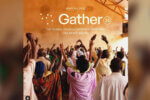Wondering which version of the Bible is right for you? Comparing can help you make the choice.
With a plethora of Bible translations available today, you might feel there’s an overwhelming selection to pick from. Some of the more popular translations currently include the New International Version, the King James Version, the New King James Version, the New Living Translation and the New American Standard Bible. Choosing can be difficult, but a helpful guide such as this one can go a long way toward ensuring that you find the perfect translation for your needs.
Bibles are generally translated in one of two primary ways: word-for-word and thought-for-thought. With word-for-word, biblical scholars take each word from the original Hebrew, Aramaic and Greek text and substitute an English word in its place, as in the King James Version. With thought-for-thought, translators look at the meaning of the original thoughts of the Bible texts and seek to convey those thoughts in a meaning that communicates the same message for modern readers, as in the New International Version (NIV).
When deciding which translation you prefer, consider the readability of each. It typically is communicated in terms of the reader’s average grade level.
Among the most readable modern translations are the New Century Version (fourth grade), Contemporary English Version (fifth grade), New Living Translation (sixth grade) and Today’s English Version (seventh grade).
Translations that skew considerably higher on the readability scale include the New International Version (eighth grade), New King James Version (ninth grade), New Revised Standard Version (10th grade), New American Standard Bible (11th grade) and King James Version (12th grade).
Some of the more popular types of Bibles, regardless of readability, are “paraphrases”—as opposed to translations. Three popular paraphrases are The Amplified Bible, The Living Bible and The Message.
As its name suggests, The Amplified Bible “amplifies” the text by offering additional meanings for key words and phrases. The Living Bible has been a perennial best-seller since it first appeared in 1971 as a personal devotional Bible. And The Message features the rhythm and tone of contemporary English to communicate truth.
The New International Version, considered today’s best-selling translation of the Bible, is widely admired for its simple, straightforward style. The purpose of the translation is to “produce an accurate translation, suitable for public and private reading, teaching, preaching, memorizing and liturgical use.”
The King James Version, the most universally accepted translation for centuries, is the best-selling Bible translation of all time. The poetic, literary style of its Elizabethan English makes it relatively difficult to read, but it is a favorite for memorization.
The New King James Version is an updated version of the venerable King James Bible. Its purpose is to modernize the original language yet maintain its unique style as much as possible. Although its choice of words makes it easier to read, it retains the 17th century sentence structure of the 1611 King James Version.
The New Living Translation applies commonly used vocabulary and language structures, components that result in a very readable Bible. The purpose of the translation is to enhance the “power and clarity” of The Living Bible and create a “translation as good for study as it is for devotional reading.”
The New American Standard Bible is a revision of the 1901 American Standard Version, updated with modern language. It is generally considered an accurate and highly respected, though somewhat formal, translation.
The New Century Version is a very readable translation that puts biblical concepts into natural terms, making it simple and easy to understand. Some paraphrasing is used to avoid words no longer in common use. It is available in several user-friendly formats, including the popular BibleZines—Bibles in a magazine format.
The New Revised Standard Version was published in 1990 as an update of the Revised Standard Version. It is a contemporary yet dignified translation that features generic language in reference to people and is widely accepted, particularly among scholars.
The Contemporary English Version presents the Bible in clear, simple language children can comprehend, yet it is mature enough for adults to appreciate also. And Today’s English Version is a translation that uses easily readable language and a relatively limited vocabulary to make it accessible to youth, the unchurched and non-native speakers of English.
One of the most recent translations is the Holman Christian Standard Bible, first published in 1999. It is an entirely new translation, crafted for today’s reader from the original biblical languages. It retains meaningful theological terms while avoiding slang and politically correct language and equips serious Bible students with an accurate translation for personal study, private devotions and memorization. It is available in a variety of formats, including audio, pocket, bilingual and large print.
The English Standard Version is another relatively new translation of the Bible that was released in 2001. Essentially literal, it combines word-for-word precision and accuracy with literary excellence, beauty and readability. It is a popular choice for personal reading and study, preaching and teaching, family reading and devotions, and memorizing and understanding the Word of God.
The New English Translation is a completely new translation of the Bible first produced by Bible.org in 2005. It contains more than 60,000 translators’ notes to help readers understand the decisions made in the translation process and to make the original languages—Hebrew, Aramaic and Greek—more accessible to the modern reader.
Also released in 2005, The Today’s New International Version is a translation based on the NIV that “clarifies and updates passages and words to provide a more timely, contemporary English rendition.” Noting the changes in the language in the 30 years since the NIV was produced, the publisher points out that this version was designed to appeal to today’s generation of 18- to 34-year-olds. It uses gender-inclusive language where the original text clearly referred to both men and women.
The Voice New Testament, released in 2008, has a screenplay-like format that appeals to young people and is especially well-suited for reading aloud. Publisher Thomas Nelson claims that The Voice translation highlights the beauty of God’s communication to His people.
Another relative newcomer is GOD’S WORD Translation, which, according to publisher Baker Publishing Group, “presents the full, accurate meaning of the original Bible in natural English—expressed in words you hear and use in your everyday life.” Rather than being translated by either the word-for-word or thought-for-thought method, it was produced using closest natural equivalence, making it one of the most readable translations on the market today.
The Expanded Bible: New Testament is similar to The Amplified Bible. According to the introduction, it “allows the reader to see multiple possibilities for words, phrases and interpretations. Rather than opting for one choice, it shows many.”
Selecting the translation of the Bible that best suits your needs can be a challenging task, but this brief overview of several of the more popular translations will simplify the selection process and help bring regular study and reading of the Bible within easy reach.







Leave a Comment
You must be logged in to post a comment.